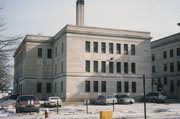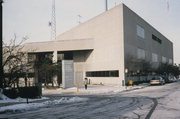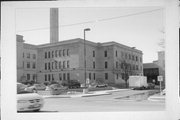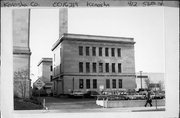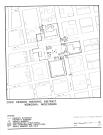Property Record
912 56TH ST
Architecture and History Inventory
| Historic Name: | Kenosha County Courthouse and Jail |
|---|---|
| Other Name: | Courthouse Annex |
| Contributing: | |
| Reference Number: | 16219 |
| Location (Address): | 912 56TH ST |
|---|---|
| County: | Kenosha |
| City: | Kenosha |
| Township/Village: | |
| Unincorporated Community: | |
| Town: | |
| Range: | |
| Direction: | |
| Section: | |
| Quarter Section: | |
| Quarter/Quarter Section: |
| Year Built: | 1923 |
|---|---|
| Additions: | |
| Survey Date: | 1999 |
| Historic Use: | government office/facility |
| Architectural Style: | Neoclassical/Beaux Arts |
| Structural System: | |
| Wall Material: | Limestone |
| Architect: | Joseph Lindl of Lindl, Lesser & Schutte |
| Other Buildings On Site: | |
| Demolished?: | No |
| Demolished Date: |
| National/State Register Listing Name: | Kenosha County Courthouse and Jail |
|---|---|
| National Register Listing Date: | 3/9/1982 |
| State Register Listing Date: | 1/1/1989 |
| National Register Multiple Property Name: | County Courthouses of Wisconsin Thematic Group |
| Additional Information: | A 'site file' exists for this property. It contains additional information such as correspondence, newspaper clippings, or historical information. It is a public record and may be viewed in person at the Wisconsin Historical Society, State Historic Preservation Office. The Kenosha County Jail or safety building is part of a cluster of classically inspired civic buildings and is located at the rear of the Kenosha County Courthouse. (See KN 14/7A). The jail is a three story limestone faced building connected to the courthouse by an underground passage. Although reduced in scale and ornament, the jail, like the courthouse, is divided into horizontal layers denoted by a projecting stone course and emphatic cornice. Stone architraves with bracketed cornices surround the doors and pilasters rise on the second and third stories on the north and south facades. Architectural Significance: The detached jail building, connected to the courthouse by an underground passage, echoes the severe Neoclassicism of the main building. More institutional than domestic, the jail is an early example of a more modern type of penal architecture in which the facility does not include a sheriff's residence. Historical Significance: The jail building was remarkably modern, with electronically controlled cell doors, exercise and shower rooms, special women's and juvenile sections, and a "model kitchen and dining room" facility. So thorough were the accommodations, the building did not require the ever-attentive presence of the sheriff or the domestic talents of his wife. Instead, the sheriff maintained a suite of offices in the building and lived elsewhere, an arrangement considered unique at the time. (See Bib. Ref. A). |
|---|---|
| Bibliographic References: | A. Kenosha Evening News, August 25, 1925, (Vol. 31, No. 231), pp. 1-3. B. KENOSHA NEWS 7/4/1996. C. KENOSHA NEWS 7/2/1996. D. LOCAL HISTORY. E. Kenosha News 3/14/1997. |
| Wisconsin Architecture and History Inventory, State Historic Preservation Office, Wisconsin Historical Society, Madison, Wisconsin |

